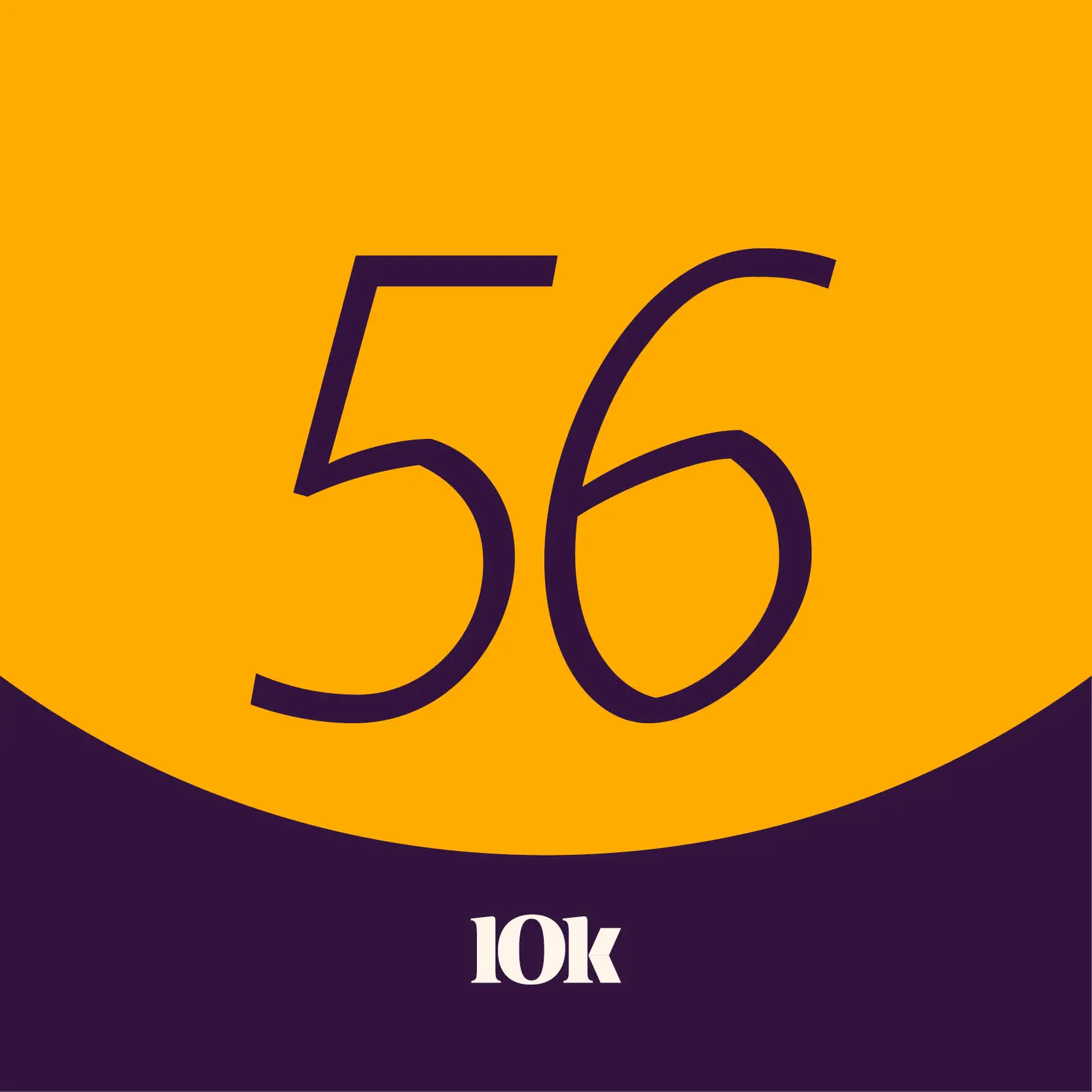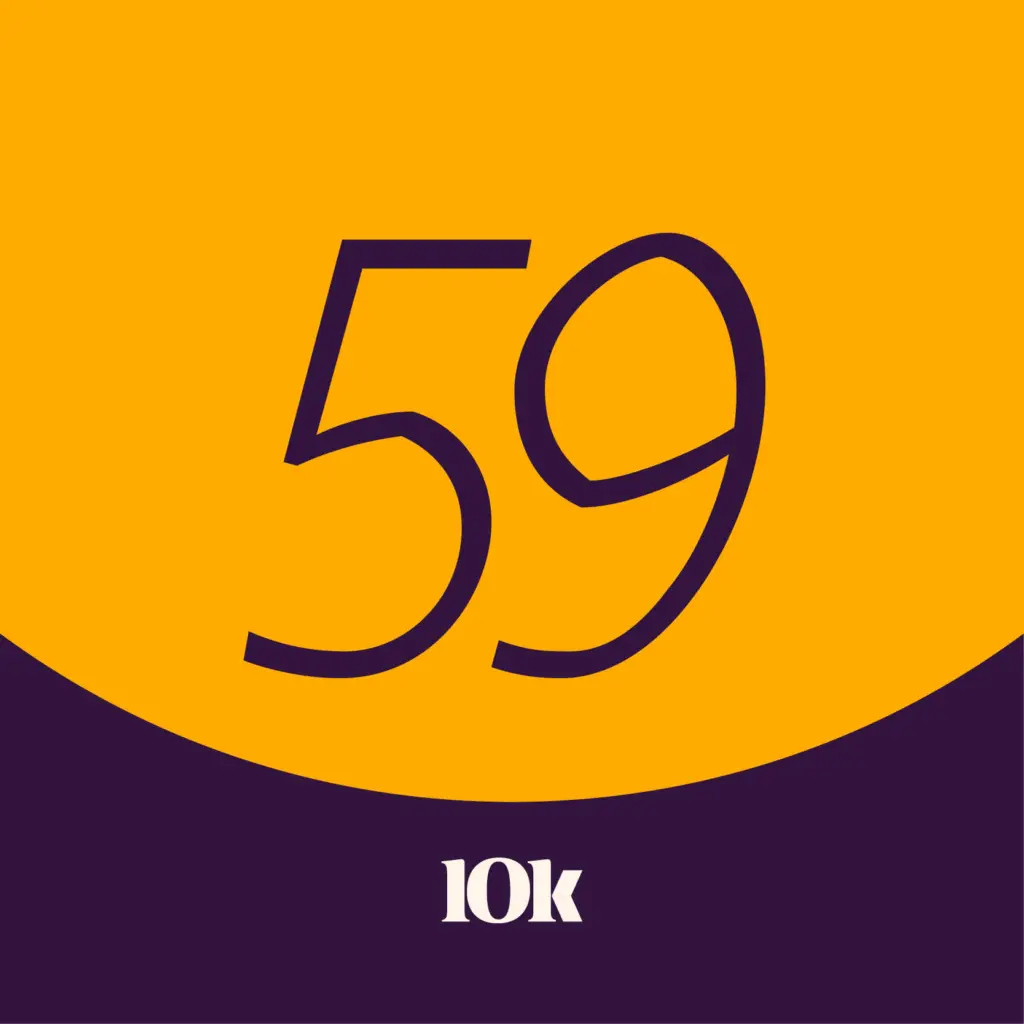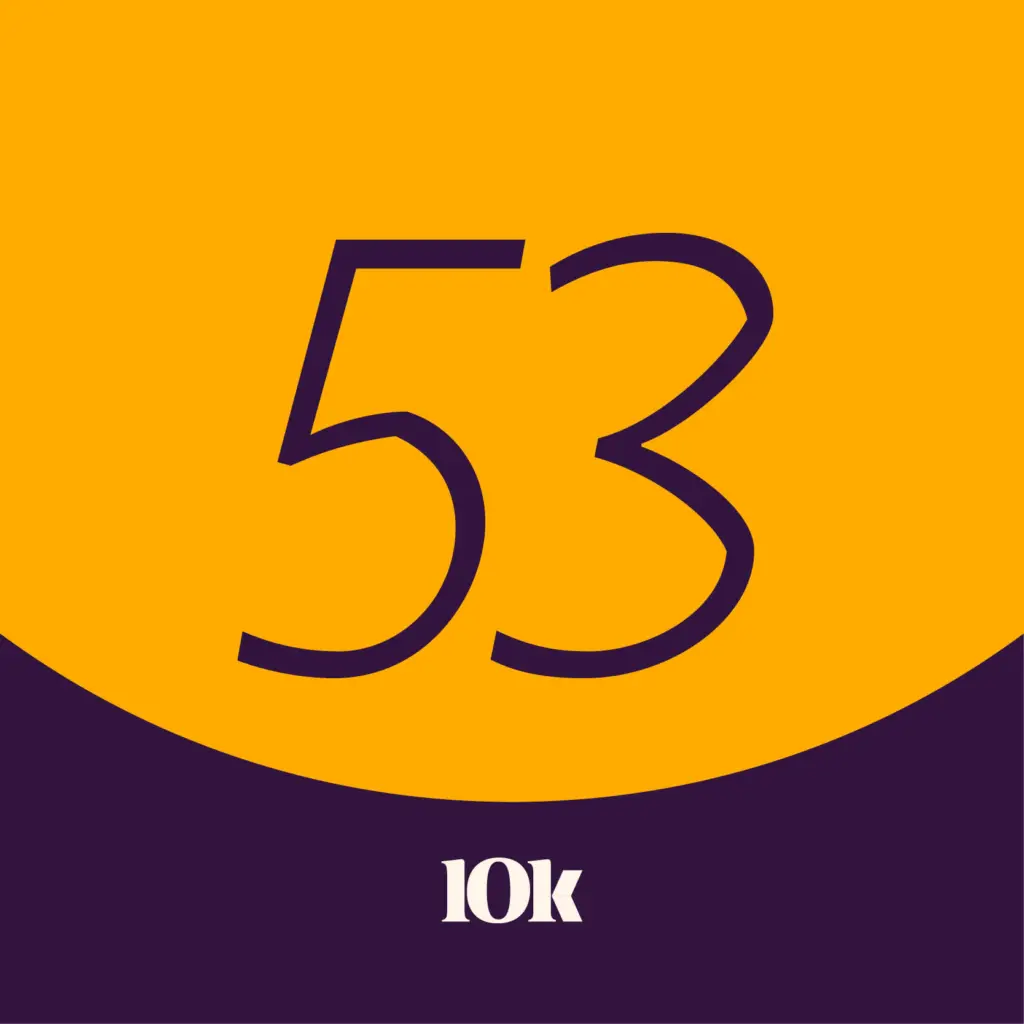Jesse David, Configuration Services Developer, and Alex Tweedy, IoT Architect, define and discuss digital twins. If you haven’t heard this term before, we’ve got you covered. Learn more about the applications of digital twins, their potential advantages and how to begin engaging with this new technology.
Hit the play button and enjoy the episode!
This podcast content was created prior to our rebrand and may contain references to our previous name (OST) and brand elements. Although our brand has changed, the information shared continues to be relevant and valuable.
Episode Transcript
Kiran: Welcome to Ten Thousand Feet: The OST Podcast. I’m Kiran Patel, and I’m joined on today’s episode by Jesse David, associate developer on the configuration services team, and Alex Tweedy solutions architect on the connected products team. Jesse, welcome to the show.
Jesse David: Thanks. Great to be here.
Kiran: And Alex, we’re glad to have you today.
View Full Transcript
Kiran: Excellent. So I’m excited, the both of you pitched this idea, and so we’re just gonna do it. We’re gonna talk digital twins. Some of you listening might be thinking, “What is a digital twin? I haven’t heard this.” Or maybe if you have, it’s only been a partial definition, so we always start with defining what we’re talking about. Jesse, tell me what a digital twin is and how you started to get interested in this subject in particular.
Jesse: For sure. Yeah, so digital twins, I feel like, often get misunderstood and a lot of people jump to the most technically complicated thought that they possibly can when thinking about digital twins, ’cause when technology comes around, they think it has to be something super difficult.
What it actually is at its most basic definition is a digital representation of any physical product that exists. So that could be something as simple as a 3D model of a computer or a car. It could be a representation of an IoT infrastructure. So you could create a digital representation of how each of your IoT devices might connect to each other and be able to go from that.
So it really can be as small as you want to, as big and technically challenging as you want, which is kind of great ’cause it definitely covers a lot. For me, what got me interested in digital twins first was–I’m on the configuration services team–we do a lot of 3D complex products configuration. So we deal a lot with furniture manufacturers and we create 3D representations of those.
And so for the longest time, I thought product configurators were kind of their own niche and its own thing, but really it does connect to digital twins in a really unique way, and in essence, it is a digital twin.
Kiran: Excellent. Perfect. Anything you wanted to add from your point of view, Alex, to that definition?
Alex: No, I think that’s a great working definition. My mind immediately goes to. Well, digital twins is a relatively new term, right? Maybe the last ten to fifteen years. We’ve been doing this for a long time, right? Whether it’s simulations of nuclear explosions, after TestBed entries, that kind of stuff. Any kind of digital representation really is what’s falling into this digital twin definition that we’re using these days.
Kiran: Excellent. I’ll toss it back to you, Jesse. You talked a little bit about some of the applications, but how are you seeing this technology applied in the space that you’re working in now?
Jesse: For sure. Yeah. So one of the things that I’ve been seeing a lot lately is the products that I’m starting to interact with the most is Unity. So what Unity is, it’s a video game engine and we take that and create 3D representations of products. So the most recent one that I’ve worked with is medical devices. And what we’ll do is we’ll work with the company to bring their products into unity. And what we’ve done is we’ve created a 3D space planner, so almost think of the Sims, but for adults. And I guess the Sims are for adults, but you get the idea. What they can do is they can create drawings and representations of, OR rooms and they can bring in the products and it’s beyond just being able to, like, drag and drop it. Like you can move the product around and interact with it as if it’s there. And we’ve tried to make it as real to life as we possibly can. You’ll be able to change the materials on it and what you’re able to do with that is sell the products.
So digital twins in that sense, it’s more than just tools that maybe engineers can use. It’s going to be able to be accessible to marketing teams, sales teams, and beyond. So being able to jump outside of that box has definitely been a really cool thing to see.
Kiran: That is really cool. How about yourself, Alex? Have you seen different or additional applications or uses in the space that you work in?
Alex: Yeah. Yeah. So my primary area of operation is connected products, right? That’s what I do for a living. And with connected products, you really, by definition with connected products, are creating digital representations of devices, right? Whether that’s a steam shower, a car, a consumer product, whatever it is. Those things are communicating back with a platform and transmitting data about their disposition and enabling features and functions, right? So with digital twin, it starts to beg the question. You have offline digital twin, things like Jesse was describing, right? Where you have a configurator, you’re going through and setting up space, and then people are interacting with it.
Where connected products bridges into that is when you have these connected digital twins, right? So maybe you have a digital representation of the space station, right? For example, right? And you want to be able to tell visually certain aspects of it, right? What do the voltages look like on the solar panels, what’s the temperature? Those kinds of things. You can start to map that data that’s coming back. And that actually is a real-life use case that we saw recently, actually at re:Invent with AWS. We went through a workshop where you were mapping those things onto a 3D model of the Space Station, and then you were able to see via color indicators and statuses and things like that. The current state of the thing, and I think there’s a lot of power in my other background beyond connected products, is I’m a data geek, right? I’ve got a master’s in data science and analytics, and seeing data being visualized in a way that it resonates with people and makes it approachable and understandable. You don’t have to be an expert in whatever that technology is to understand when I look at this, oh, there’s a problem here. I need to go address this. So applying those same kind of things to supply chain and manufacturing, that’s where I see a lot of power with digital twin.
Kiran: And following up on that, Alex, could you talk a little bit about any other advantages that you see of this technology now, or things that you are seeing, maybe coming down at the horizon for this space?
Alex: Yeah, I think, we’ve seen a real acceleration over, honestly the last 10 years with the price of sensors and the ubiquity of these IoT platforms from primarily the hyperscalers, right? The Microsofts and the AWSs. So this stuff is really approachable, right? As you’re building out a new product or outfitting an existing product, you can put more sensors that are gonna give you better data at lower levels of granularity that now you can transmit more frequently because connectivity is better.
So the pump is really primed there with having this wealth of kind of very rich sensor data. that you can then bring back into these solutions. And those same hyperscalers are offering digital twin solutions now. So you don’t have to go do some custom implementation on your own. You can really be up and running in the span of a couple-hour workshop with a rudimentary example, and then start to put that through its paces as far as ‘what is the business value here?’, ‘what are we really trying to drive to?’. You can start to test some of those hypotheses.
Kiran: Excellent. Jesse, anything you wanted to add as far as advantages that you’re seeing of this technology so far?
Jesse: It really unlocks what your products can do. It allows you to iterate faster. You don’t need to have the physical product there. As Alex was saying with the sensors, that’s a really great point. With all the supply chain issues that companies have been having lately, you don’t have to wait for a part to come in. You can make a digital representation of it and start testing it then and there on your product that you’re working on, if it’s a car or a bulldozer or something like that. You don’t have to wait for that giant physical part to come in. Another thing that I feel like is a huge benefit is it makes things safer. One of the really cool products that I was looking at a few days ago was this digger that this company was working on that’s supposed to go into mines and dig out these raw materials and it’s super dangerous work. And what they were able to do is they were able to make a digital representation of their product to go into these simulated tunnels that they represented from real tunnels that exist. And they were able to teach the digger using AI and their digital twin network to go and dig these things without having to have a person inside of there.
And so they’re not having to try and train this AI on a physical product that’s driving around like, if you can imagine a massive bulldozer accidentally running into a building or something, like that would not go well. Yeah, I feel like that’s definitely some of the pluses of having these digital twins around.
Kiran: Yeah. And we couldn’t have this conversation without talking a little bit about the potential downsides. Do you think this technology is fully fleshed out? Is there, are there still pieces of it being understood? But the question for both of you, could that lead to any potential downsides?
Jesse: Yes. I feel like one of the definite downsides is if you get it wrong. Because say you were working on something and you feel like you’ve built out your application to its fullest and you think you’re done. So the next step is to actually put it with the physical thing that’s there, and then you discovered that something was not right in your digital twin.
So there’s definitely almost a reliant issue that there might be, so if we start to lean into this too fast, there’s definitely some growing pains that could happen, but that happens with all things. And I feel as we do this more and more, it’s just gonna get better.
Kiran: Yeah. How about you, Alex? What would you like to add?
Alex: No, I was gonna say, I think there’s two things, and that’s really using the technology for the right use cases. And I know that’s a super fuzzy statement, right? But at the same time, I think it’s using that common sense where, not trying to shoehorn everything into a digital twin, right? If you can still go with reasonable effort, go measure a physical object and you’re not constrained by time, materials, resources, those kinds of things. That’s still gonna be better most of the time, versus relying on a digital twin, right, where the digital twin is powerful as when you need to do that for things that are either geographically very far apart or your resource constraint, whatever that is.
The other thing that comes, always top of mind in connected products, but especially with digital twins, is data privacy. So it’s more of these sensors get out in the wild, and you know, you’re talking about we all walk around with phones in our pocket all day. That’s creating this giant data trail of where we were and who we talked to and all those different kinds of things. Making sure that the right frameworks are in place, whether those are legislative frameworks or industry frameworks to make sure that data is secure, it’s encrypted, the user is aware of what data is being collected and what they’re, what that data’s being used for, what they’re giving up.
And I feel like there’s even more, there’s definitely been over again the last ten, fifteen years, people have become more and more aware of that digital kind of trail. That, and it really is a digital twin of them. That’s a lot of the time the value proposition for a lot of these services that are out there now is the digital representation of you, so that you can be marketed to more effectively so that, the plus is that you’re gonna be routed more effectively. You’re gonna get value out of it, but you’re definitely not getting that for free. If a product or service is free, you are the product or service, right?
Kiran: That’s a little frightening, but real.
Alex: Yeah.
Kiran: Jesse, I’ll start with you. Could you talk a little bit about where you see this technology going in the future and how it fits in with other leading edge, if I’m saying that right, technology such as the Metaverse, for example?
Jesse: Yeah, so I feel like where we’re at right now is, it’s almost like a starting point. This is only going to get bigger. Right now the three main players in the cloud space like Amazon, Microsoft, Google, they all have their own solutions, but they’re all different. I know that Amazon’s is more of a holistic approach where they’re taking data, connecting it to models, and then composing that in a 3D visualization, which we were talking about from re:Invent. And so their tool is focused toward in industrial operations, improving those. I know that Google’s is focused at supply chain management and creating digital twins of those. And then Microsoft’s is over IoT devices and trying to approach those and create better representations of those.
As far as the technologies that people keep pointing towards that are beyond digital twins, the metaverse. It’s a very big and awesome, powerful thing. And a lot of people smile and think that’s, it’s so unrealistic because it’s far out there. It’s definitely not a now thing, which makes it really hard to think about. Where digital twins fit into this is they are the digital representation of these fiscal things, and that’s going to kind of slot into this metaverse, whatever that becomes. And so we’re almost creating stepping stones. We’re not trying to make the whole big great thing right now, we’re just trying to create these representations to allow faster improvements, safer improvements, and I definitely feel like that’s where things are going.
Kiran: Awesome. How about you, Alex? Any applications or predictions you have for where this technology is going in the future?
Alex: Yeah, I think maybe take a little more utilitarian view of it versus the metaverse. I think it’s an interesting concept, but I tend to stay more focused on things like Big Pharma, right? So as you start to get to more, the acceleration of digital medicine through the pandemic, right? The remote visits, the fact that most of us are walking around with an Apple Watch or a Fitbit or something that’s collecting, again, more and more granular health data, which is great, right? Privacy concerns notwithstanding, but pulling that together and then thinking about the idea of like, designer drugs, right? So I can now have my genome sequenced. I can provide the.. My doctor has all my digital health record information. I have family data that I can provide along with real-time biometrics, getting to the point where side effects are minimized. Efficacy is through the roof. The ability to try different combinations in a digital space before I actually take that pill and experience those side effects is huge.
And then also the energy infrastructure. Obviously with the transition to electric vehicles and the smart grid and the need to integrate more and more renewables into our kind of our energy mix. The ability to optimize those things is really gonna drive, right? Where is the best spot for that solar farm? Where are the wind farms at? Which ones of the solar, or of the wind turbines have dirty blades and are suboptimal? Which ones need service? How do we optimize all of that to get the most out of that infrastructure and that investment? That’s where I see this really taking.
Jesse: It’s interesting that you mention infrastructure because I believe it’s Orlando, the city of Orlando, has announced that they’re making a digital twin of the city. So they’re going to be able to monitor traffic patterns, how street lights perform, energy use throughout the city, and where they’re going to be able to make improvements. So I feel like that’s coming. Or like even wastewater management, like there’s the things that, as a technology side that I have a hard time thinking about, but it’s coming. It’s on its way. So yeah, infrastructure was a great callout.
Alex: Yeah. And I think back to, we talked earlier about visualization and that’s always phase one, right? Phase zero is just getting things instrumented, and that’s really where we’ve been for a long time already, right? All these municipalities, infrastructure companies, all these things, they have data about real world because sensors are out there, they’re measuring, they’re getting collected, big data, all those things.
I think the power of it is when we can start to get to the point where that information is shared, brought together, and then, phase one is visualization. You can put that in front of somebody, they can understand it. But the real, the next evolution there is starting to bring, machine learning and AI and optimization routines to that, to really drive that next thing. It’s great if I can show you what this thing looks like. I can show you this digital representation. But now if you use machine learning, algorithm to go through and optimize that, the operator doesn’t need to know, oh, when this light turns this, I do this other thing. The machine has already guessed based on sensor data. It was getting that was gonna happen and dispatched a field tech to fix that issue.
Jesse: Yeah. They could even improve traffic flows and such. Like having machine learning and AI, but us as humans, we’re actually semi-predictable on what we do. Every day I go to work. And so they can start assuming how many cars are out on the road, where they’re probably going to be going, and they’ll be able to change how the lights work right then and there. So the improvement’s coming.
Kiran: A lot of fascinating applications. So I wanna tie this back to OST and what we do here. So I’ll start with you, Alex. Can you talk a little bit about how OST is positioned to be at the forefront of these technologies and our intersection with some of these new technologies?
Alex: Yeah, absolutely. We’ve got a great set of multidisciplinary experts essentially at OST that can come to bear on these kinds of things and help all the way from initial ideations. So we have our human-centered design practice that can talk to you about what you’re trying to achieve and how a digital twin or other things might come, and what a revenue model’s look like, all those kinds of things, into configuration services who has expertise in 3D design and configurators and it’s on the forefront of the digital twin stuff.
And then, obviously the team I’m on, connected products, where we go through the nitty-gritty of what are the right sensors, how do you connect those, what kind of platforming do you need, command and control, all the typical connected product stuff. I’m also into data and analytics. So we’ve got a great data and analytics process here, practice here that experts in ML and AI and making sure you have the right data models in place so that you don’t make your life a living nightmare later when you’ve got all this data and you’re trying to weed through it and find those nuggets.
Kiran: Awesome. How about you, Jesse? Just your thoughts on why OST is positioned at the forefront of these technologies?
Jesse: Alex is completely right. We have experts in almost every single of the individual fields that lead towards digital twins, and I’m seeing more and more as we work on projects year after year. Those are starting to integrate a lot more. So we’ve had conversations with companies to see how the data that they’re collecting can be associated with these 3D representations that they have or how they can manage that data better to create a machine learning algorithm, to make their products better.
So we’re really right there. We’re working on these things right now, which is a huge advantage and we’re not going to stop, that’s for sure.
Kiran: Awesome. Jesse, are there places that you turn to, to stay up to speed on knowledge and happenings in this space? Just wondering what you’re reading and where people can go to find information about what’s breaking and new.
Jesse: Yeah. Probably one of the easiest ways right now with digital twins is googling it and looking at the latest news. Like one of the things that just popped up on news for me recently was Lockheed Martin. They’re starting a space program. And they’re working with a company called Nvidia who makes graphics cards and works on graphics processes to create a digital representation of the earth and beyond that, weather patterns and stuff like that. So just being able to find this stuff is super cool ’cause it’s becoming more and more popular. So beyond Google, I follow a few people on Twitter from the larger companies like Google and Unity and Amazon and such. And then I also read Medium articles. Those have been really great. I love my Medium subscription.
Kiran: Excellent. How about you, Alex? Where are you turning to when you wanna know what’s due, what’s trending?
Alex: Yeah, like I said, I had the opportunity a couple of weeks ago to go to AWS re:Invent and attended a lot of sessions in the, obviously the connected product space, but also using things like twin maker and, workshops, chalk talks, all that kind of stuff.
And a lot of that content is available out through a combination of YouTube or tutorials. So if you have specific services, whether those are Microsoft, AWS, whoever they are, part of the benefit with the Cloud hyperscalers and a lot of their free tier usage stuff is you’re able to go out and get your hands dirty and just start to touch and feel and try some of this stuff. And they’re, they’ve really done a great job of making it very approachable. So you’ll end up with, a relatively complete digital twin in not a lot of time. And that can go a long way to thinking through what the business implications or that next big idea might be.
Kiran: Cool. A little bonus question, Alex, for you. Are there tips or best practices for our listeners who might be wanting to start engaging in this space, something that they should or should not do as they start to consider applications of digital twins in their own businesses?
Alex: Sure, yeah. I would say, seek help relatively early, like if you’re starting down this journey. OST is definitely very well-versed at working through some of those early growing pains, right? Even if you just have basic ideas or you feel like there’s something there you can engage with our team whether that’s through our human-centered design practice or through something like a discovery engagement with the connected products team. We don’t just get involved when something is fully formed and ready to be built. We help businesses and people align stakeholders and get through some of those early growing pains as well.
Kiran: Awesome. Same question for you, Jesse. Just tips or recommendations as if I have a prospective business wanting to engage in this space and consider the applications of digital twins in my own business.
Jesse: Yeah, I feel like Alex is right. Being able to speak to people who have a better understanding of this to really help you figure out if your products or business could benefit from something like this. I’ve definitely seen a few companies try and jump right in and get started right away. But they never asked if they really needed it. And so being able to seek help and find people who can tell you or let you know or work with you to figure out if this is something that you need will definitely help.
Kiran: Awesome. Jesse, final thoughts on digital twin that maybe we haven’t covered already?
Jesse: Something that we haven’t talked about a whole ton is how this works with AR and VR, which is something that I get super excited about ‘cause that’s stuff that I’ve gotten to work with a lot lately.
One of the things that I’ve gotten to see is we’ve started to make tools that work with, I’ll lean this back to the OR room idea. So we are at a point where you can create an OR room design and you can talk through that design and load that into a VR or AR headset. And our capabilities are good enough where you can network with a client in another state, country, if they have the application and the headsets, they could be there with you without needing to physically be there. So digital twins are definitely going to make things a lot easier when having those discussions with clients or other people, and I can’t wait to be working on those types of things.
Kiran: Awesome. Alex, any final thoughts from you on this technology that we haven’t covered already?
Alex: I think it’s definitely an area that people are starting to get used to seeing in their everyday lives, whether they realize it or not. So specifically I think through the Tesla driving experience, right? You see all these videos online of people, which sometimes they’re funny videos, right? Of the VR kind of or AR view on the dashboard of the road ahead, but that’s a digital twin, right? That’s the car creating a mapping of its environment and bringing that back and putting it into a visualization that people are gonna understand, right? The car doesn’t see that, the way the Tesla drives itself is not looking like, through a camera at the screen where it’s showing the stop lights and doing some of those things.
But it’s definitely not as far out there as it may seem, right? Like you may not be able to walk up to anybody and say, “Hey, give me a definition of a digital twin”, and they’re gonna know what you’re talking about. But people are starting to experience this in their everyday lives, and they’re going to come to expect it more and more.
Kiran: Excellent. Thank you both for being on the show today and for diving into this topic of digital twins. Stay tuned for more episodes of the OST Podcast. Thank you.
Alex: Thank you.
Kiran: OST, changing how the world connects together. For more information, go to ostusa.com.




